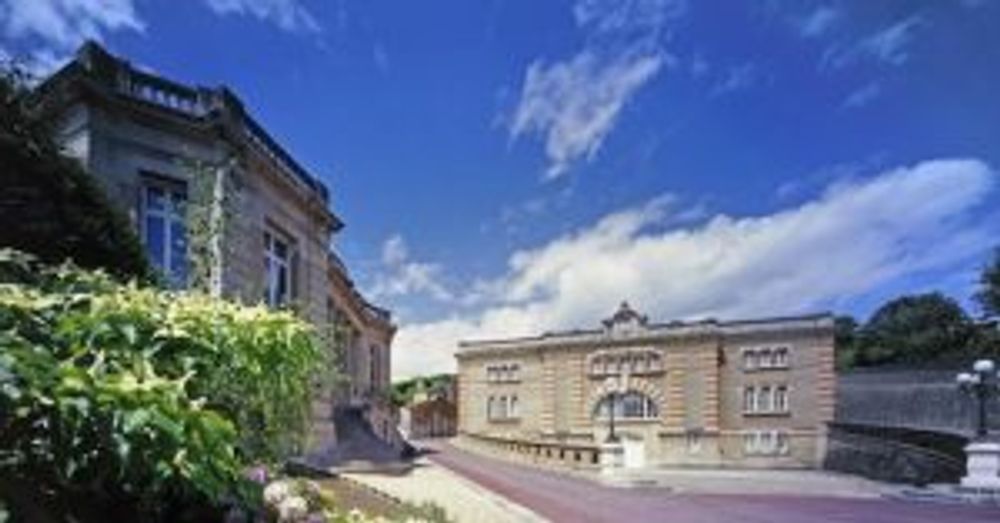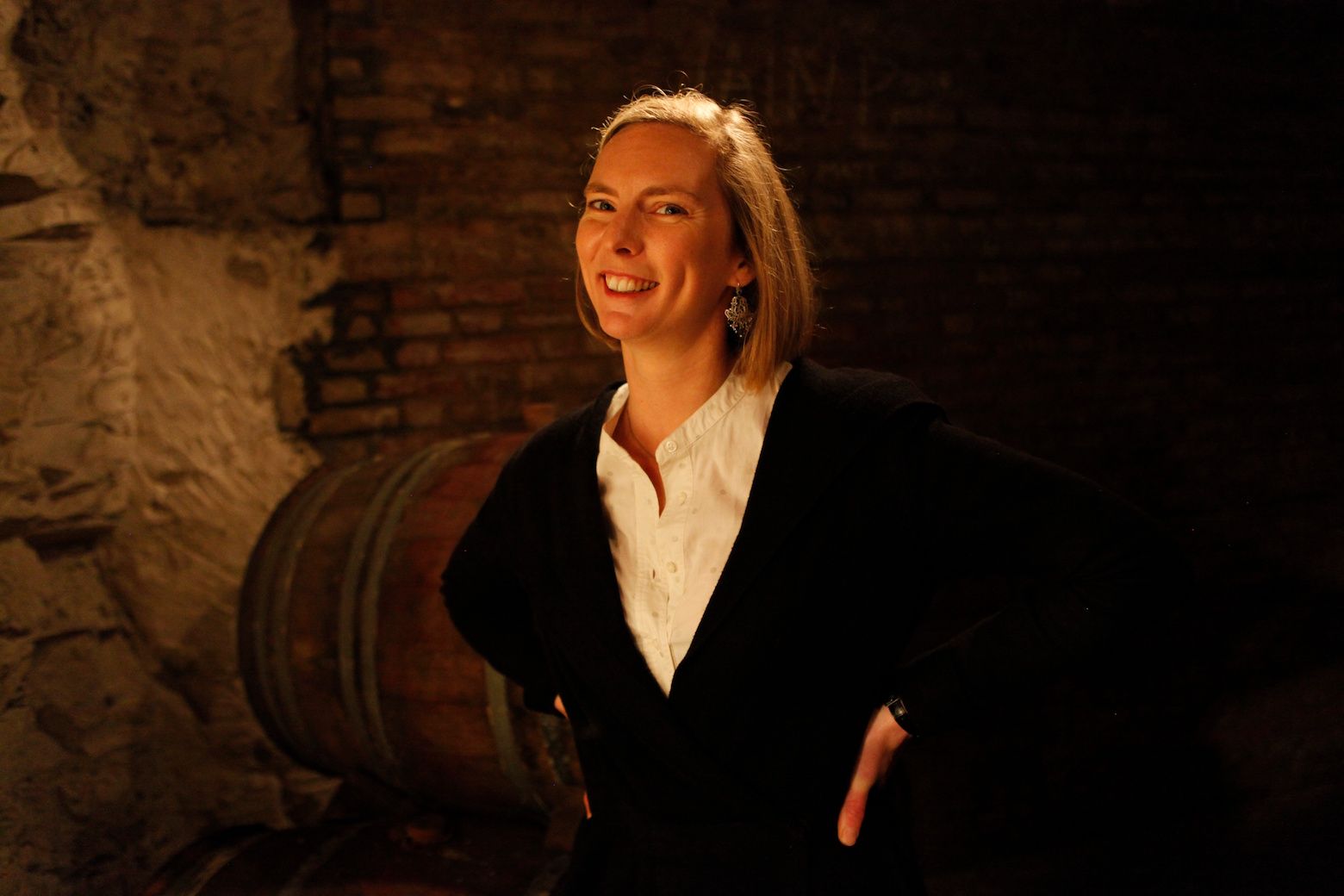A focus on Chardonnay, long lees ageing under cork and other ways that Ayala Champagne makes itself special
Caroline Latrive, chef de cave at Champagne Ayala, makes a swooning gesture when she talks about her Chardonnay.
She simply loves this grape.
She is in London to give me a taste of her latest vintage, the Cuvée Perle d’Ayala Millésime Brut 2006, made from 80% Chardonnay and 20% Pinot Noir which will be released in the UK in early 2017.
1 – The house itself
“It’s the real notion of a maison, we have four walls and a roof. Everything happens between these walls,” Latrive says of the artisanal ethos of Champagne Ayala.

The house owns one hectare of Grand Cru Chardonnay vineyard in Chouilly, but has longstanding relationships with growers in numerous communes to source fruit from between 80-100ha of vineyards, extending as far as Les Riceys in the Aube and the Petite Montagne de Reims.
“I think it’s really important to have this diversity to get complexity in our wine,” Latrive thinks.
She collaborates closely with the growers and says that she has the freedom to make lots of viticultural decisions, “it’s almost like standing in my own vineyard”. The house has an annual production of just 750,000 bottles.
2 – The house style and the predominance of Chardonnay
“Ayala is the expression of freshness, elegance and purity,” says Latrive.
“I put in a lot of work to get even more precision and to achieve this I use a lot of Chardonnay. My work means getting the most sublime expression of Chardonnay. It’s interesting for me to witness the same style of our house in the expression of our different cuvées.”
3 – The double-positive of malolactic fermentation and the slenderness of stainless steel
Latrive says that she always lets her base wines go through malolactic fermentation: “Because it’s a double-positive – first of all it gives the wine stability. To prevent malolactic fermentation I would either have to use sulphur or micro-filtration.”

She thinks either of these would detract from the wine. “I also think that you get more aromatic complexity with notes of white flowers and white fruits. It also brings out chalky notes and adds something silky to the texture, along with notes of iodine.”
While the wines have a creamy, soft texture and a finely calibrated balance, they are slender rather than rich or opulent. Latrive achieves this by sticking to stainless steel vessels throughout. Each plot is vinified separately and she has a huge range of tanks of all sizes to choose from.
“We are not a big winery,” she explains,” but we have more than 100 vats. Last year there were 56 different elements in the Brut Majeur NV from 32 different villages. It’s very important for me to have such a large palette so I can work like a painter.”
4 – The combined effect of long lees ageing and low dosage
“It’s important not to have too much dosage. It never is more than 7g/l across the range.”
Latrive is adamant that more sugar adds nothing to the wine: “I look for great balance. I want freshness without aggressive acidity. I want tension and in order to do that I need time. It’s totally necessary to exceed the legal minimum ageing periods of Champagne. For Ayala Brut Majeur NV on average this is a minimum of three years. This way we get more structure, more body, more roundness.”
5 – Ageing vintage under cork
Unusually, the entire production of the Vintage Cuvée Perle, 15,000 bottles for the 2006 vintage, is aged on lees under cork rather than crown cap. This decision is based on the different trajectories of the oxygen exchange rates of natural and crown caps.
Latrive explains that while the oxygen exchange in crown caps is initially lower than with natural cork, it increases exponentially after a certain number of years.
For her vintage cuvée which stays on lees for nine years, this would lead to a premature maturation. Natural cork on the other hand, has a slightly higher oxygen exchange rate from the start but a far more consistent one.
Latrive insists on the highest quality of natural cork and also believes that cork gives more aromatic complexity and an especially fine mousse, “a real velvet touch”, as she puts it. The aromas she ascribes to ageing under cork are “black pepper spice, toast and a hint of vanilla and slight nuttiness.”
Cuvée Perle D’Ayala Millésime Brut 2006
“2006 had no major climatic incidents, had a maturity of 9.9 degrees of potential alcohol at harvest, great acidity and a low pH. Simply great potential for a vintage wine. I saw during blending that the base wines from the Grand Cru vintages had so much evident personality,” Latrive explains.

The Cuvée Perle 2006 is made from 80% Chardonnay from Avize, Chouilly and Oger and 20% Pinot Noir from Aÿ. The entire production was hand-riddled and hand-disgorged in March 2016 with a dosage of 6 g/l.
The wine is exceptionally pale, and still has a rather shy nose. The palate is striking: it combines a filigree slenderness with a very fine, gentle, almost caressing mousse of tiny bubbles.
Once the wine opens up, very soft notes of apricot Viennoisserie appear. The finish has very subtle but long notes of chalk and umami.
Latrive has achieved exceptional elegance and light-footed finesse with this wine: “I want a great expression of Chardonnay from this Perle. The Pinot Noir is there to support and magnify the Chardonnay, ” she says.
Cuvée Perle d’Ayala Millésime Brut 2006 will be released in the UK in early 2017 via Mentzendorff.


































